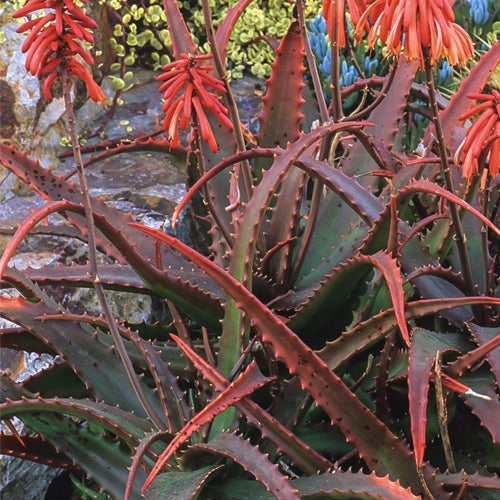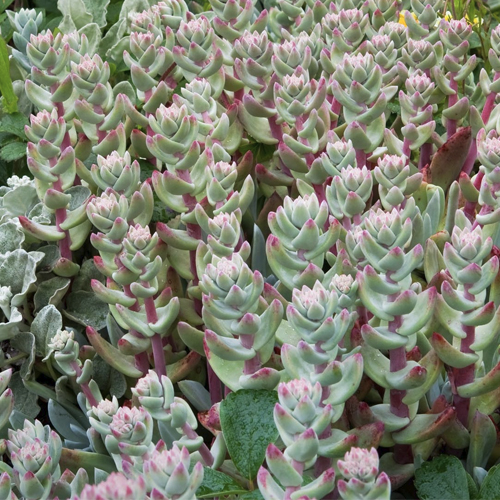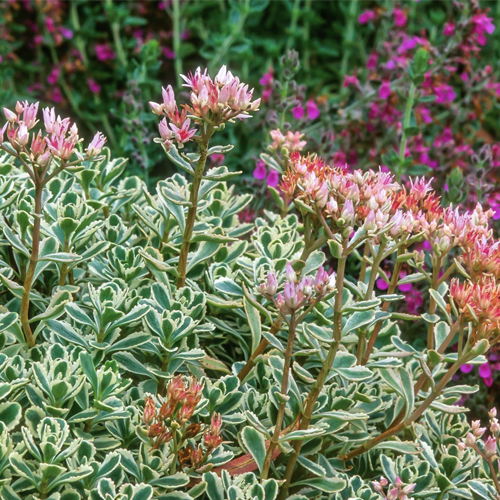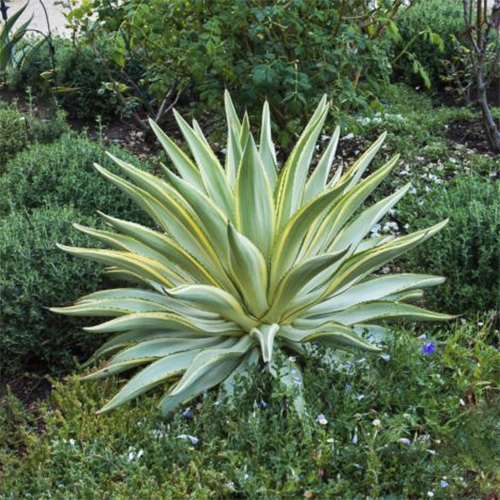Sonoma Succulents Hilltop
BACK TO FULL TOUR
Garden Features
Drought Tolerant
Deer Resistant
Drip Irrigation
Smart Irrigation Controller
Xeriscape
Partner: Santa Rosa Water
When life gave me lemons, I made a succulent garden.
My husband and I spent five years building a staycation backyard, and then lost it all in one night to the Tubbs Fire—just five months after our garden had been featured on the Santa Rosa Medical Association Foundation’s 25th Annual Garden Tour and one month before it was scheduled to be featured on the cover of Fountaingrove Life magazine. Hundreds of plants, fifty trees and multiple lounge areas were gone, along with the backside of our house and our detached garage. Losing the garden, especially a prolific Meyer lemon tree, was the hardest part. We had no choice but to make lemonade.
Rebuilding the garden took 2-3 years, moving in phases as construction on the house and garage was completed. Because we were underinsured, we had to take on all of the garden demolition, plant research, landscape design and construction ourselves, along with a fair amount of the installation. Trips to Santa Barbara and Baja from 2015 to 2018, along with the full sun exposure we gained from the fire, inspired us to convert the garden to succulents. Countless hours of online research—and learning that most of the damages to our property were caused by mulch and plastics near the home—led us to fully embrace hardscape and xeriscaping in our garden rebuild. Not only would the garden be a defensible space against future fires, it would use much less water. The environment and climate had changed, and our garden needed to change with it.
Our succulent garden is filled with 100 varieties of succulents, many of which were propagated from backyard garden to rebuild the landscaping in front of the house and around the garage over the next two years. At last count, there were 22 different types of agaves, 11 aloes, 10 cacti, 8 Euphorbias, 7 aeoniums, 5 cotyledons and 4 senecios—to name a few. Now mature, these succulents only need irrigation once a month from May through October (or whenever there is no rain for 30 days). In addition to drought tolerance, other rewards of this succulent garden are year-round beauty and bloom diversity spanning all seasons.
The result of our hard work was so striking that Sonoma magazine and the Press Democrat wrote about our rebuild, and neighbors started asking me to design their gardens to be water- and fire-wise. I found a new calling that I did not set out searching for, but I am enjoying using my creative abilities in new ways through garden design. The garden acts as a nursery for plants to use in my client’s succulent garden designs and to gift to friends. I’m overrun with agave pups, iceplant and aeonium cuttings—I never expected to have this many babies in my forties.
Special Events
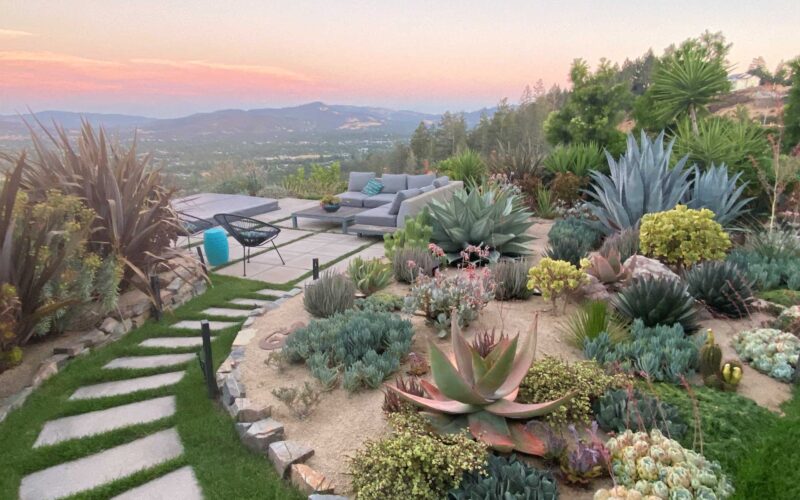
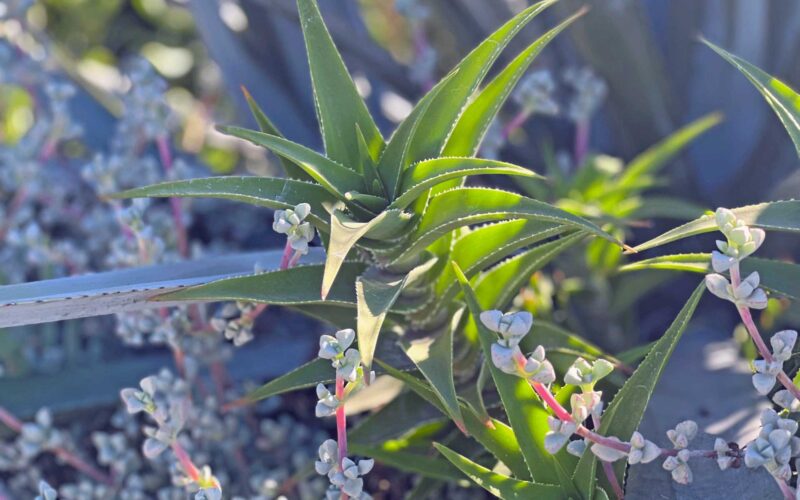
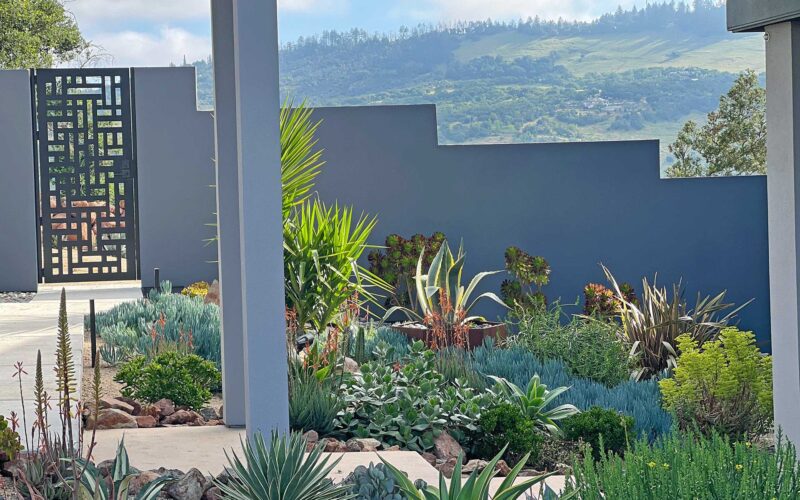
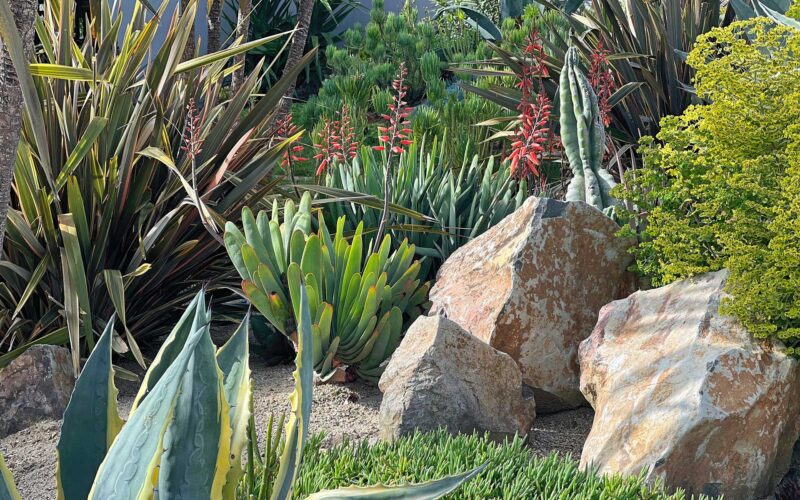
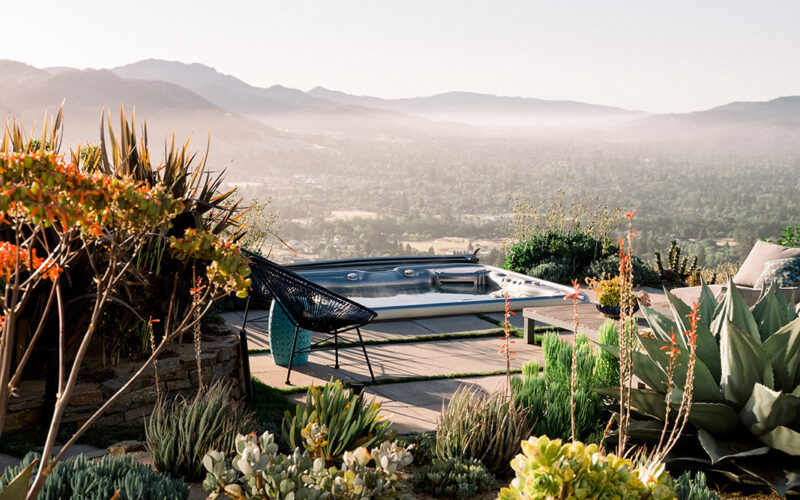
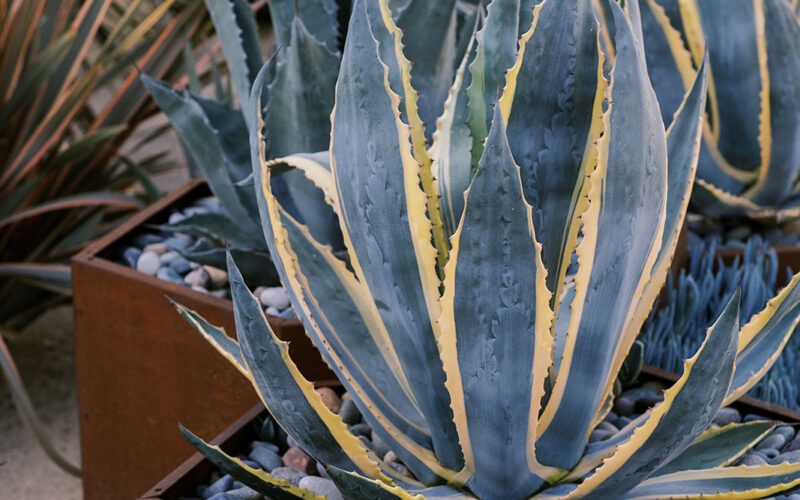
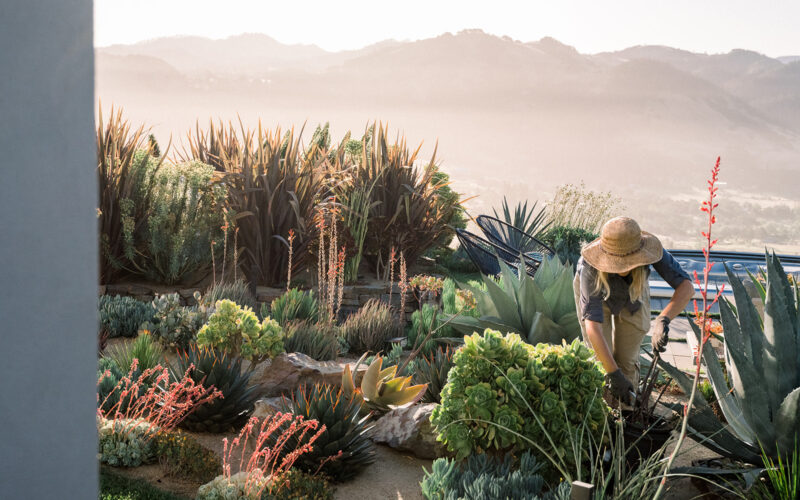
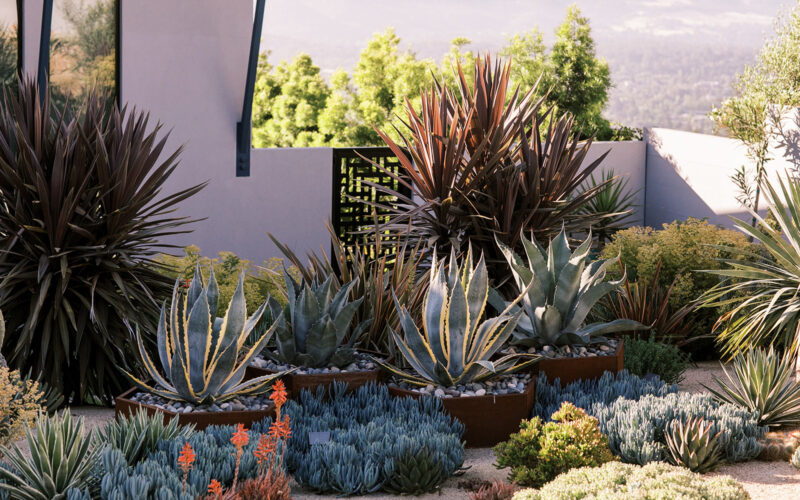
Plants in this Garden
Favorite Plants
Whale's Tongue Agave
Vanzie agave
Slipper Plant
Pedilanthus macrocarpus
Finger aloe
Cotyledon orbiculata var. oblonga ‘Flavida’
Baby Rita Prickly Pear
Opunita ‘Baby Rita’
Fire Spinner Ice Plant
Delosperma ‘Fire Spinner’
Favorite Garden Suppliers
Lone Pine Gardens
6450 Lone Pine Road Sebastopol
Devil Mountain Wholesale Nursery
499 Pepper Road Petaluma
Recommended Resources
San Marcos Growers
An excellent resource to confirming plant frost tolerance, light needs, water, and scientific names. It’s a wholesale nursery that doesn’t sell to the public, but I use it often for research.iScape
Useful app for designing your own garden.Gardening Tips
If you’re interesting is transitioning to a succulent garden, if you don’t like to throw away live plants, make space for a small nursery or potting area if you don’t have enough land to continue planting plants. One of the greatest joys of succulents is that many have pups that need to be removed to keep the garden tidy. I pot them, grow them and gift many of them.
